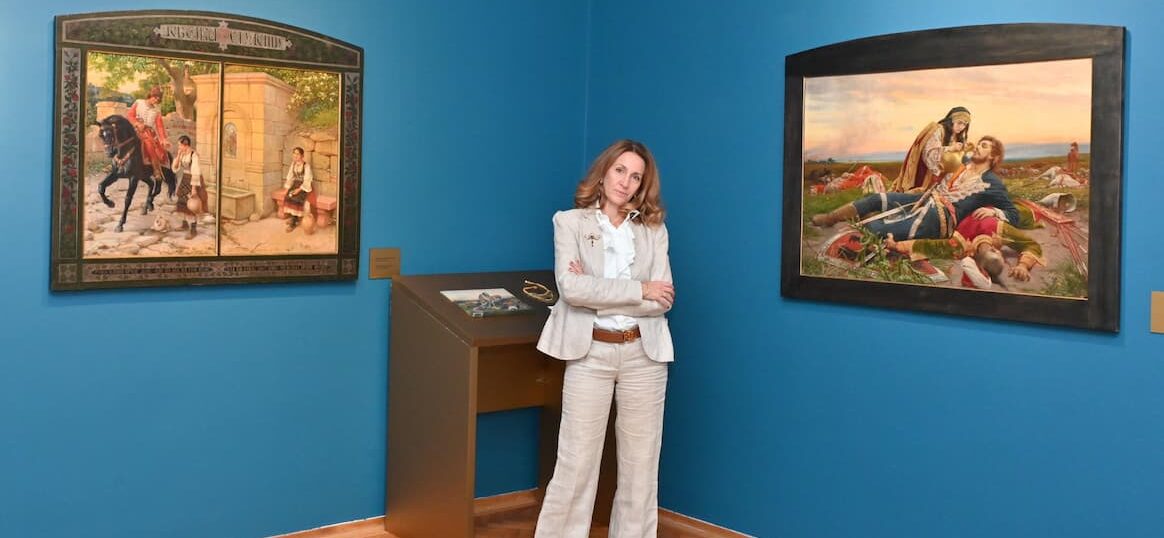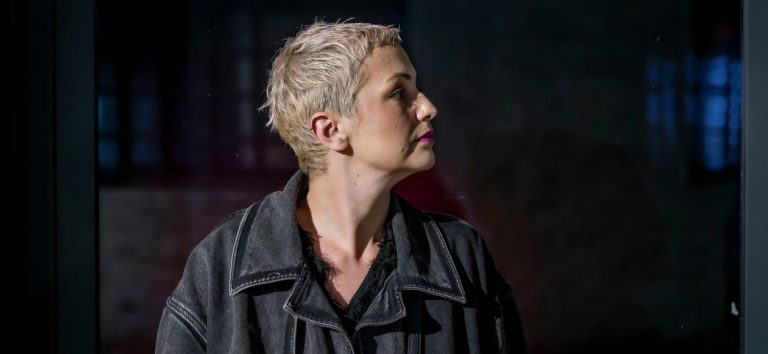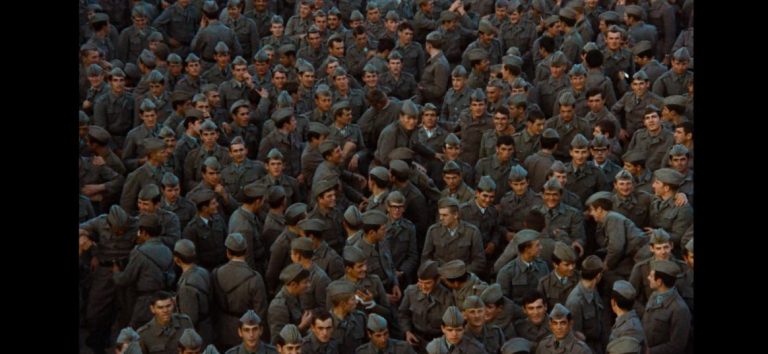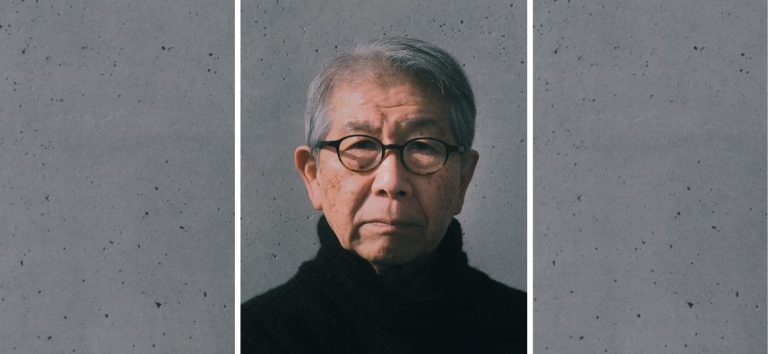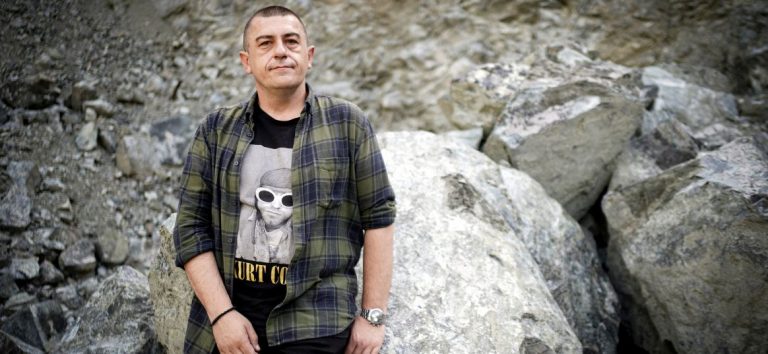For the first time in the European Capital of Culture, the Novi Sad audience has the opportunity to see a comprehensive exhibition of paintings ‘Uroš Predić for Everyone’, of one of the greatest national painters who, having created continuously for more than eight decades, left behind an extremely rich artistic oeuvre. The exhibition, which displays more than 100 works of this great Serbian painter, is open to visitors of the Gallery of Matica Srpska until 31 January 2023, and its added value is that it is accessible to everyone and adapted to the blind, deaf, people with physical, and intellectual disabilities, and it is also appropriate for all ages. In this way, the Gallery of Matica Srpska started celebrating its 175th anniversary. The Director of GMS, Tijana Palkovljević Bugarski, PhD, spoke to Visit Novi Sad about the importance of this national exhibition for the European Capital of Culture, and we also talked with her about cooperation with ECoC and the works of Uroš Predić. We found out which of his paintings is her favourite, but also what kind of programme awaits us as part of the jubilee celebration of this important cultural institution.
The Other? Europe programme has begun with a major exhibition of national importance, giving the Novi Sad audience a chance to reacquaint itself with Uroš Predić’s works after 25 years, and this time in a more accessible way. In what way does this painter’s art reach everyone now?
Exhibition Uroš Predić. A Life Dedicated to Beauty and Art includes over 140 museum pieces – more than 100 artworks of this great Serbian painter, as well as records, and portraits of him, made by his artist friends. Presenting Predić’s art, which he created for eight decades, we want to tell the story of his character and work and, at the same time, point out the fundamental values of the Gallery of Matica Srpska. For the last 25 years, we have been striving towards the goal of the Gallery becoming a museum open to everyone, and with this exhibition, we want to show that art and culture can be accessible to everyone. This is how the Uroš Predić for Everyone project was conceived, within the framework of which we adapted the exhibition and the work of Uroš Predić to children, young people, the elderly, as well as to people with different disabilities. Furthermore, the exhibition is accessible to people with visual impairments through three-dimensional models of Predić’s most representative works accompanied by audio recordings. The catalogue in Braille and the audio recording of the catalogue were specially made. For people with hearing impairments, there will be guided tours through the exhibition with interpretation into sign language. In this way, we want to reach all people and show that everyone can be a part of museums and art.

As you mentioned, on this occasion we will be presented with more than 100 works of Uroš Predić. Could we assume that this will be the first time that some of them will be available to the GMS visitors?
Thanks to private collections and collectors, the exhibition presents eight works of art that were previously unavailable to the general public. Among those works are Children under the Mulberry Tree, which shows Predić’s yard in front of the family house that no longer exists today, but where there is still a hundred-year-old mulberry tree, as well as works of religious themes such as Prophet Amos. As we try to keep up with modern approaches and technology, the exhibition features a 3D animation of the portrait of Queen Natalija Obrenović from 1890, which is also privately owned, and which until a few years ago was believed to have been lost. The exhibition also includes works from the Serbian Orthodox Church’s Building of the Patriarchate in Belgrade, which are also unavailable to the general public.

How important is the opportunity to see the collected works of this painter, but also the opportunity for everyone to experience it equally, without restrictions, in your opinion, important for the city of culture and especially in the ECoC title year?
This is an exceptional opportunity for all our fellow citizens to get to know and see the rich oeuvre of the painter who lived for almost an entire century and painted around 1700 works of art, in a unique author’s selection of Igor Borozan and Snežana Mišić. The current scientific approach contributes to the modern visitor to better understand Predić’s timeless values and the importance of his creativity in the national and European context. At the same time, the participatory approach and way of presenting that the exhibition is accessible to everyone is a step forward that is in the spirit of European values of tolerance and a society open to all in which culture, cultural institutions and contents are accessible to everyone: children, young people, the elderly and people with disabilities. This is the new value that the European Capital of Culture project added to the work of the Gallery of Matica Srpska and contributed to us stepping beyond our established practices.
How well does the audience here know the artistic expression of the great painter Uroš Predić?
It is certain that the audience is well acquainted with Uroš Predić’s name, and I sincerely believe his painting oeuvre as well. This is evidenced by the great interest of the audience, which was brilliant at the opening of the exhibition and during the first weekend of its duration. His most significant paintings are recognisable and already engraved in the memory of the nation, but every new encounter with such great national art always arouses interest and encourages the audience to visit the exhibition more than once.

Which of his works is your favourite?
My favourite work by Predić is The Sulking Girl or, as we like to call her, our own Mona Lisa. It is a painting that had special importance for him because thanks to it he received the Baron Gundl Award in 1879 as the best student of the Vienna Academy of Fine Arts. He never parted with it until he donated it to the Gallery of Matica Srpska in 1948. Since then, it has been part of our permanent installation and we never part with it either. This painting is a perfect illustration of Jovan Jovanović Zmaj’s famous – Sulker and represents an exceptionally emotional and tender representation of a child that leaves no one indifferent. And finally, we are all sometimes sullen for no reason and we need someone to cheer us up with a kind word or a hug, and art always provides that and encourages us to be better people.

A rich accompanying programme was announced as part of the exhibition. Can you tell our readers what to expect until the end of January 2023, during which time the exhibition will be open to visitors?
What the audience can expect daily are guided tours through the exhibition from Tuesday to Sunday at 1 p.m. and 5 p.m. From November, lectures by experts will be held on Fridays at 7 p.m., which will bring various aspects of Predić’s work and life closer to the audience, and some of these lectures will be interpreted into sign language. The Uroš Predić project includes the following programmes for everyone: a new educational programme for children, Once upon a Time, There Was a Painter. Uroš Predić, which will be followed by a children’s publication and creative workshops for children on Saturdays from 11 a.m. to 12.30 p.m., a family guide will be available every day, workshops for young people Predić as a Comic Book Hero, inclusive workshops in cooperation with the organisation Per.Art, a programme for the elderly, Predić in a Suitcase and a guided tour of the exhibition twice a month with interpretation into sign language.

When we talk about accessibility, this exhibition has opened the way to bring art closer to a wider audience in an innovative way in the future as well. How challenging was this project?
This was an extremely challenging project because, in addition to the regular museum work, which is the creation of the exhibition and the preparation of the accompanying catalogue, it also involved a whole series of innovative activities that we have not implemented before. Preparing children’s publications and programmes is already established practice for us, but this time we created a comic for young people for the first time, and the famous Novi Sad artist Mileta Poštić helped us with that. Stepping into the world of accessible setups required numerous partnerships with individuals and institutions that have experience in the field. We implemented this part of the project in cooperation with the Kunsthistorisches Museum in Vienna and the Typhlological Museum in Zagreb, and we were supported by numerous associations from Novi Sad: Vojvodina Association of the Blind, Milan Petrović Primary and Secondary School, and the Society of Sign Language Interpreters and Translators. We are proud that we managed to improve our activity and show that it is possible to create an exhibition that everyone gets the opportunity to enjoy.
The Gallery of Matica Srpska is one of the oldest national cultural institutions and this October, it is celebrating its jubilee 175 years of existence. The aforementioned exhibition serves as the crown jewel of this jubilee. What does this jubilee mean to you, being the Director of an institution that represents our rich cultural heritage? How do you see the future of the Gallery, which proudly preserves and passes on the values of the endowment to new generations?
With this exhibition, we are actually starting the celebration of the jubilee, which will last for a year. We have a new permanent exhibition of modern Serbian art as a big project and the opening of the Dragiša Brašovan Gift Collection exhibition in June and a retrospective exhibition of Vasa Pomorišac in October 2023. For me, this anniversary is the end of a 25-year-long era during which we successfully transformed the institution from a traditional and conservative museum into a modern one, open to all. It was a period in which we achieved numerous dreams – we renovated the building, improved the storage and display conditions, enriched the fund with 3,330 works, made 306 exhibitions and published 224 publications. However, the most important step forward was that we managed to achieve numerous international partnerships and initiate cooperation and exchange of exhibitions with numerous European museums.
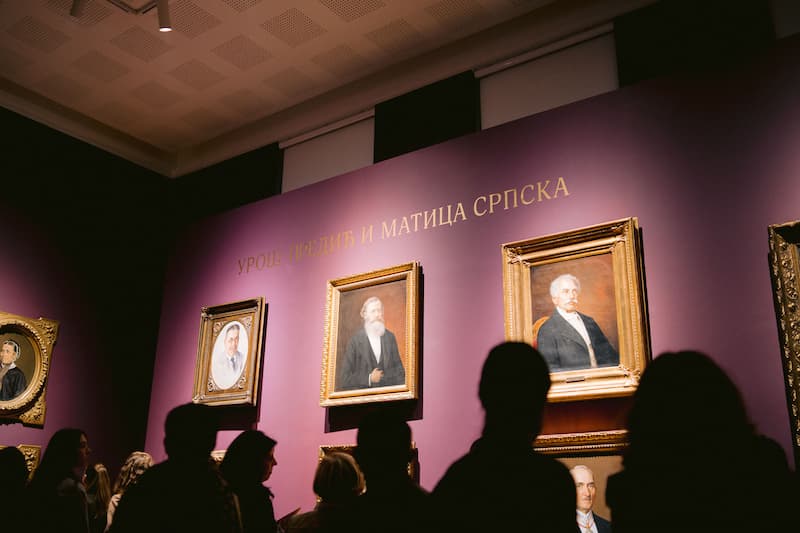
At the same time, we managed to make a serious step forward in the field of educational programmes and become an important place in the education of children and young people, and therefore in the life of the local community. And, finally, we have become a centre of excellence in the field of conservation, which we are particularly proud of. The period behind us can be seen as a phase of laying solid foundations and establishing standards for the beginning of a new phase in the work of our museum. This jubilee is truly a moment to celebrate and proudly highlight everything achieved because a lot of good has been done, and we can rightfully say that we have become the pride of the nation. By celebrating this anniversary, we are opening a new chapter in the development of the institution with a clear idea in which direction it should develop.
The Gallery of Matica Srpska and Novi Sad – European Capital of Culture Foundation have significantly cooperated in the title year, which resulted in numerous projects that enriched the cultural life of fellow citizens but also attracted many new visitors to the city of culture. In your opinion, how important is it to nurture and highlight our rich heritage through the synergy of ideas and different projects?
During the past year, the Gallery of Matica Srpska has implemented incredible seven major exhibitions which were diverse, and thematically different, but which were enjoyed by many fellow citizens, as well as visitors to Novi Sad. By cooperating with the Foundation, artists and citizens of Novi Sad, we managed to improve, complement and make our usual activity more attractive. Therefore, I think that this synergy of ideas was the main ingredient that contributed to the transformation of the way of presentation of the heritage that we inherited.
To what extent did the ECoC title revive the Novi Sad artistic scene and how would you define the cultural identity of this city?
Novi Sad has always had a rich artistic scene as a city with a large number of cultural institutions and festivals. The ECoC title contributed to the increase in the number of events, but more importantly, their quality. Steps were taken towards more innovative and interesting programmes that showed the European spirit and trends and presented the city as a great art scene. The cultural identity of this city could be defined as a combination of tradition and innovation, classic values and contemporary concepts that create a vibrant artistic offer.

What cultural events do you always make sure to visit?
Along with the museum activity, I like the theatre the most because it fascinates me with its complexity – text, acting, stage design, and costume combined into a unique whole of what makes up a performance. Also, I enjoy the classical music concerts organised by the Music Youth the most, because they relax me; for me, they are the ideal place to indulge in art.
Author: Marina Marić
Photo: Private archive; Vladimir Veličković

